Just over an hour past midnight, Joe and Kim Cole were startled awake by a dreadful sound. A horrifying roar echoed from the other side of the camp, filling them with terror as they recognized its source: the bear had returned.
Mother Nature is a ruthless instructor. She doesn’t allow for repeated mistakes.
What Actually Happened?
This brings us to the heartbreaking tale of Davis Loken, a 65-year-old retired nurse from California who tragically lost her life to a fierce Montana grizzly bear.
Davis, an adventurous soul, had joined a 2745-mile ultra-endurance cycling event, known as the Tour Divide, from Banff to New Mexico.
Accompanied by her sister and a friend, she enthusiastically prepared for the anticipated journey. She stocked up on food and clothes and even packed bear spray. But, unfortunately, these precautions proved insufficient against one of nature’s most formidable predators, the grizzly bear.
Despite their fierce reputation, grizzly bear attacks are relatively rare in the U.S., with only around 11 fatalities reported each year. However, when these bears become aggressive, it’s typically in defense of their cubs or when they feel threatened. In this instance, it was the allure of food that spelled disaster for Davis.
An experienced traveler, Davis made a single yet grave error during her stay in the small town of Ovando on the banks of the Blackfoot River. Ignoring warnings about a wild bear in the area, she decided to camp outside near another cycling couple, Kim and Joe Cole. Her sister and friend, uncomfortable with the idea, opted for a hotel.
- MAXIMUM STOPPING POWER: Strongest formula allowed by law (EPA Requires…
- SPRAYS UP TO 50% FURTHER: With a 30-foot (9-meter) spray range reaching up…
- IMMEDIATELY ACCESSIBLE BEAR SPRAY: Easy to access when seconds count, our…
- QUICK & QUIET ACCESS TO PROTECTION: Velcro sound could aggravate a…
- RIGOROUSLY TESTED TO MAXIMIZE YOUR SAFETY: E.P.A. and Health Canada…
The crisis struck just past 3 a.m. when Davis heard a rustling sound nearby. She soon realized, with a shiver of fear, that the bear outside was enormous. Relying on her nursing instincts, she tried to scare the creature off by shouting and making noise, a strategy that worked initially, causing the bear to retreat into the darkness.
However, Davis misjudged the situation. Even after the scary encounter, she decided to stay in her tent, convinced that the lentils in her tent had attracted the bear. To prevent further incidents, she removed all food from her tent. Yet, she overlooked a tiny detail – a small bag of toiletries that had once held cranberries was left behind, its faint aroma enticing enough to the bear.
Sadly, her miscalculation proved fatal. An hour later, the bear returned. Despite the Coles’ efforts to scare it off, it was too late for Davis. She was fatally wounded, a sight that would haunt Joe and Kim forever.
An autopsy showed that Leah’s neck was broken, her spine was severed, and she was killed immediately. The bear didn’t hurt anyone else and quickly ran away.
In their report, the National Park Service described the incident as a predatory attack and suggested that the bear was likely conditioned to associate humans with food. They also noted the Fourth of July leftovers littering the nearby park as a possible contributing factor. The bear was later found and euthanized, confirmed as the one responsible for Davis’s demise through DNA analysis from its paws.
These DNA tests confirmed that this same bear was responsible for raiding a chicken coop a few hours after Leah’s attack. The bear, which was estimated to be between four and seven years old, was found and killed by officials a few days later.
Despite the horrific tragedy, bear experts affirm that most bears are non-threatening to humans. However, Davis’s mistake of returning to her tent after the initial encounter probably emboldened the bear. Combined with the food residue in the park and her toiletries bag, the bear likely entered a predatory state.
To stay safe around grizzly bears, it’s important to travel in groups, stick to established paths, and make noise to announce your presence. If you encounter a bear, stand your ground calmly, wave your arms to appear larger, and slowly move away without climbing trees. Always carry bear spray, never leave food or food-smelling items out, and never get between a mother bear and her cubs. Lastly, if a bear acts aggressively, leave the area immediately, as it may have been conditioned or habituated to humans, which could potentially be deadly.
The report also contained a photo taken by a hidden camera (see below), believed to show the bear that attacked Leah.
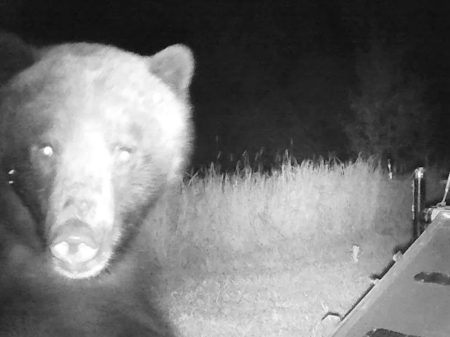
Photo: Interagency Grizzly Bear Committee
The Interagency Grizzly Bear Committee (IGBC) is a group formed by multiple U.S. federal and state agencies to ensure the recovery and conservation of grizzly bear populations in the wild. It works on coordinating policy, planning, management, and research efforts related to grizzly bears across their habitats.
Leah “Davis” Lokan Fatally Mauled by Rare Predatory Montana Grizzly Attack (Video)
15 Facts About Grizzly Bears (aka North American Brown Bears)
- Grizzly bears, also known as North American brown bears, are one of the largest land predators in North America.
- They can weigh between 400 and 800 pounds, and males are typically larger than females.
- Grizzly bears can run at speeds of up to 30 miles per hour, which is faster than any human can run.
- Their diet is omnivorous, consisting of plant and animal matter, including berries, roots, fish, small mammals, and occasionally larger prey like elk or moose.
- Despite their powerful build and potential speed, most grizzly bears tend to avoid humans when possible.
- Attacks on humans are relatively rare and often a result of surprise encounters, a mother protecting her cubs, or a bear that has become used to human food.
- Grizzly bears have an exceptional sense of smell, even better than a hound dog’s, and can detect food from miles away.
- Human-bear conflicts can often be avoided by proper food storage and disposal in bear country.
- Grizzlies are more likely to attack when surprised or feeling threatened, so making noise when hiking in bear country can alert them to human presence and prevent surprise encounters.
- Carrying bear spray when in grizzly territory is highly recommended, as it has been proven to be an effective deterrent in potential attack scenarios.
- The grizzly bear population in the lower 48 states of the U.S. is estimated to be around 1,500, showing they are not a common encounter for most people.
- Grizzly bears have a powerful bite that can crush a bowling ball, emphasizing their strength and potential danger.
- However, they play a vital role in maintaining ecological balance by controlling other animal populations and spreading seeds through their droppings.
- Although grizzly bear attacks make headlines, you’re statistically more likely to be struck by lightning than attacked by a bear.
- Conservation efforts are ongoing to preserve grizzly bear populations while educating the public about how to safely coexist with these powerful creatures.
Expert Tips on Surviving Bear Encounters (Video)
Related Questions
1. How can you tell if there are bears in the area where you’re camping?
Want to Connect With a Community of Over 1,078 RV Enthusiasts?
It’s important to do a bit of research before setting up camp. Talk to local park rangers or consult reliable online resources to understand if you’re in bear territory. Once you’re there, look for signs like bear tracks, scat, and scratch marks on trees. If you see these signs, it’s an indication that bears may be in the area.
2. What should you do to prevent attracting bears to your campsite?
Bears are mostly drawn to the scent of food. So, ensure all your food and toiletries (which can also attract bears due to their scent) are stored in bear-resistant containers or hung from a tree in a bear bag at least 100 feet away from your campsite. Keep your cooking and eating areas clean, and never leave food or trash unattended.
- MAXIMUM STOPPING POWER: Strongest formula allowed by law (EPA Requires…
- SPRAYS UP TO 50% FURTHER: With a 30-foot (9-meter) spray range reaching up…
- IMMEDIATELY ACCESSIBLE BEAR SPRAY: Easy to access when seconds count, our…
- QUICK & QUIET ACCESS TO PROTECTION: Velcro sound could aggravate a…
- RIGOROUSLY TESTED TO MAXIMIZE YOUR SAFETY: E.P.A. and Health Canada…
3. If you encounter a bear, what should you do?
Stay calm and do not run – this could trigger a chase response. Instead, slowly back away while facing the bear but avoiding direct eye contact, which bears might perceive as threatening. Speak softly to let the bear know you’re human and not a prey animal. If the bear approaches, try to make yourself look bigger by raising your arms and standing on your tiptoes, and making loud noises to scare it away.
4. What’s the difference between black bears and grizzly bears when it comes to human interactions?
Both black bears and grizzly bears generally want to avoid humans, but their behaviors can differ. Black bears are more likely to run away when frightened, while grizzlies might stand their ground. If a grizzly bear charges, using bear spray is highly recommended. If physical contact occurs, play dead by lying flat on your stomach with your hands behind your neck. For black bears, however, fighting back is usually recommended if they make contact.
5. What should you do if you’re camping with kids and you encounter a bear?
Keep children close to you at all times in bear country. Teach them the same safety rules as adults: never approach a bear, back away slowly if you encounter one, make noise to scare the bear away, and use bear spray if necessary. If a bear approaches, pick up small children immediately to prevent them from running or making sudden movements.
"Man cannot discover new oceans unless he has the courage to lose sight of the shore."
-- Andre Gide

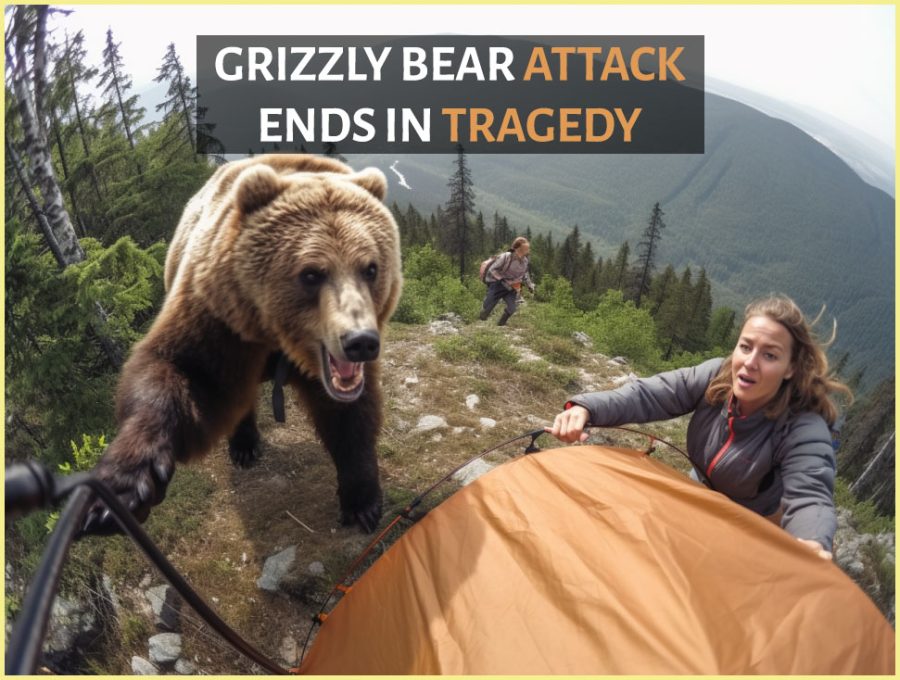

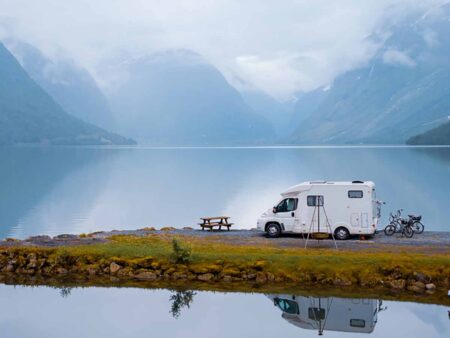
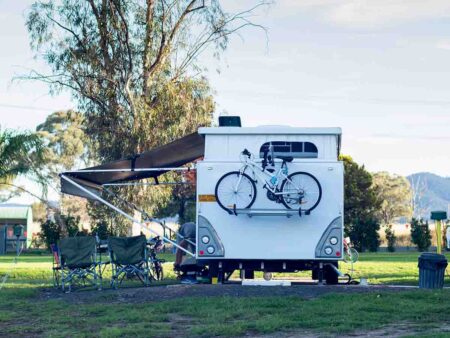


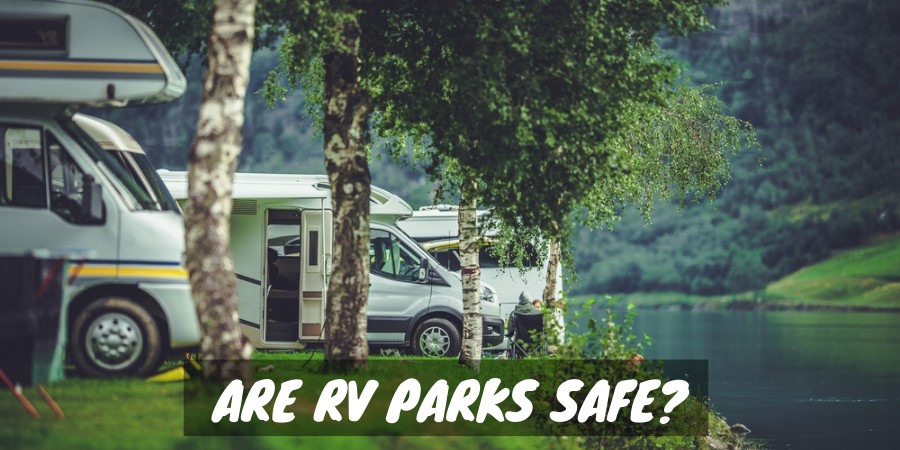





First as a Marine we are trained never to go anywhere unequipped.
If your in Grizzley country you carry at least a pistol 45 ACP or a 30/06 hunting rifle. Bear spray works on some bears but if a Grizzly is hungry he’s not stopping for anything except a shot to the head. And when their running it’s not eazy to shoot hit. Your taking your life in your hands if your in a known grizzly area. Check with the forest ranger and find safe sights to camp. Never camp near waste containers too.
11 PEOPLE KILLED BY GRIZZLY BEARS EACH YEAR.I BET EVERYONE OF THEM HAD BEAR SPRAY.WHEN ARE YOU PEOPLE GOING TO UNDERSTAND THAT BEAR SPRAY TO ME IS A JOKE.CARRY A 44 MAGNUM OR A 357 MAGNUM PISTOL TO PROTECT YOURSELF.THATS IF YOU WANT TO LIVE.
Most people who spend a great deal of time in grizzly country will tell you that bear spray is more effective. The last time I checked, there had been few occasions where bear spray was properly dispensed and the person was mauled anyway, one of these was a mother bear with cubs. Bear spray does not need to be fired as accurately as a firearm and is less likely to result in a wounded and more dangerous bear.
Absolutely agree with you on the complexity of this issue. It’s a real head-scratcher, isn’t it? On one hand, you’ve got wild animals like bears, who act on instinct, and society’s response is pretty black-and-white: a bear harms a human, and it’s often hunted down. It’s tragic, but many see it as a necessary evil for public safety.
Now, flip the script to domesticated animals, particularly breeds like pit bulls, historically bred for aggressive tasks like bull-baiting. The waters get murky. These dogs are part of our homes, yet when they exhibit dangerous behavior, the reaction isn’t as cut-and-dried. Some folks argue it’s all about the upbringing and environment, which is a fair point. But then, shouldn’t there be stricter regulations or at least some form of accountability for owners?